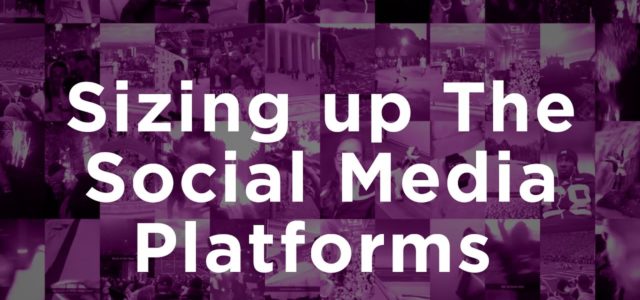Digital transformation is the business, technology and process response to an empowered customer who demands an empathetic and emotional experience in context – the right information at the right time in the right channel and on the right device.
According to Dell Technologies’ Digital Transformation Index (a study of 4000 business leaders across 16 countries and 12 industries), 45% of business leaders fear being obsolete in 3-5 years, 48% are unaware of what their industry will look like in 3 years, and only 5% are classified as digital leaders.
How will companies evolve their strategy – people, process, tools, technology and experience – to meet the changing demands of customers and lead in today’s connected economy?

CONNECTing with the customer requires an understanding of their needs, motivations, and aspirations. The primary way to fully grasp the goals and priorities is to conduct audience research to discover an authentic understanding of your customer. You will gain a deeper awareness of your customers through the employment of primary research methods which includes a balance of qualitative research (ethnography) and quantitative research (polls, questionnaires, surveys). Secondary research from reputable sources can also serve to validate the findings from primary methods and provide additional context and insights. Analyzing and synthesizing the data gathered to uncover insights allows you to DEFINE the wants, needs, and expectations of your customer.
Following the audience research, the next essential step is to DEFINE the communication narrative in your customers own words. It is important to evangelize and live the needs of your customers through ongoing communications, both externally and internally, to ensure that those servicing the customer have a common and authentic understanding. Representation of that understanding can take the simple form of writing about the knowledge gained (blogging, articles in industry rags), speaking about the insights during presentations at conferences, interviews with the press, podcasting (for internal and external audiences) and sharing content (video, audio, written) on social channels. Through the acknowledgement of customers’ challenges, relevance is established and awareness is garnered that the organization is in tune and pursuing/evolving solutions to address real customer problems.
To expose and UNLOCK the voice of the customer means to bring the customer into physical and digital existence in your everyday work space. Providing quotes that speak to the narrative, building to the arc of the customer story in their own words and truly indoctrinating the entire organization into the customer’s journey and interactions drives change in attitudes and direction. The voice of the customer aids all brand and customer advocates to ground the purpose of activities being undertaken across all teams – executives, business owners, marketing, sales, product development, engineering and innovation practices.
The impact the customer can have on business strategy and planning, customer research, marketing, sales, product development and other corporate activities should be directed by living the understanding of the customer. Posting quotes that speak to needs of the customer in the work environment, incorporating a coherent story down a hallway, setting up a cube with a mock customer in the office or even having creative customer experiences like a recording in the kitchen of what expectations the customer has are all compelling ways to keep the customer top of mind.
Having grounded the organization holistically in knowledge of true customer needs, bringing digital experiences to life requires an honest and transparent process. Tools and methods vary from organization to organization. However, all teams should be grounded in the ability to rapidly prototype and iteratively improve an envisioned customer experience to gain insights and feedback. Visualizing ideas by using sketches, wireframes, or live code proofs-of-concept allows you to test user experiences, reduce technical risk, and define MVP solutions. This process, employed to the point of exhaustion, enables you to make more informed decisions, faster. The rapid concepting and prototyping ensures that the testing and iterating on ideas will result in a valued end customer product.
Once the design testing has substantiated the right solution for the right problem as the right experience, it is permissible to BUILD the solution. Again, the prior indoctrination of the designers and developers in an understanding of the customer’s true objectives and goals allows the team to build a solution that addresses the appropriate requirements that service a genuine customer need. This understanding and the previous design concepting drives the creation of sound information architecture, user interaction patterns, workflow mapping, design and customer experience.
Using modern technologies and software practices – enterprise-grade application development, proven software development tools and methodologies for testing and deployment – engineering can effectively build a robust, scalable and maintainable product that delivers a solution to the customer problem.
TRANSFORMation only happens when the practices, methods and approaches described above become part of practice, optimized and the manner in which business is regularly conducted. Developing ongoing customer-centric processes and operations that renew and repeat without self-imposed organizational friction is the process reengineering that will enable the organization to remain relevant to its customers and competitive in the new economy.
Customer trust is earned through the consistent satisfaction of expectations and delivery on the brand promise. And, it is worthy of note that buzzwords like agile process, design thinking and service design were not used to describe what good designers have known for a long time. Today’s terminology is really just application of tested practices and constructs applied creatively and flexibly to modern problems.
Article by channel:
Everything you need to know about Digital Transformation
The best articles, news and events direct to your inbox







